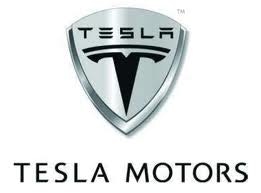While I agree there are some solid bear — along with bull — arguments for Tesla Motors Inc (NASDAQ:TSLA), these three common bear arguments should hibernate:
1. The Model S is more expensive than other EVs (and hybrids)
This argument goes like this: “The Model S is more expensive than its main competition, the Nissan Leaf and General Motors Company (NYSE:GM)’s Chevy Volt.” The writer then goes on to conclude that Tesla, therefore, won’t do well.
The entire premise is flawed. The Tesla Motors Inc (NASDAQ:TSLA) is a high-performance, full-sized, luxury vehicle with about a $70,000 base price. The Leaf, an EV, and Volt, a plug-in hybrid EV, are moderately-priced, smaller hatchbacks. (Leaf is classified as mid-sized, and Volt as a compact.) With few exceptions, we’re not talking the same type of buyer.
Tesla’s main competitors are mid- or full-sized, high-performance, high-end vehicles, such as select models from BMW, Daimler’s) Mercedes, and Volkswagen’s Audi unit. The Model S has a range of 265 miles per charge, so the fact that it’s an EV is almost irrelevant. That range covers about 95% of all driving. And once the charging station network is built out, the fact that it’s an EV will be totally irrelevant from a range-anxiety standpoint.
Luxury and performance aside, the beauty of Tesla Motors Inc (NASDAQ:TSLA)’s strategy is that unlike the other companies who entered the EV market, Tesla can compete with gas-powered autos because of its superior range. The Leaf’s range of 75 miles per charge makes it a no-go for many buyers.
Given all the awards and accolades the Model S has racked up (such as the Motor Trend Car of the Year; and a 99 out of 100 rating by Consumer Reports), this shouldn’t be hard to understand: The Model S is not “just” a superior EV, it’s a superior high-end vehicle. Period.
2. The Model S is too pricey relative to the average-priced vehicle
The conclusion here is, “So, the company has limited growth potential.”
This is a solid concern, as at some point growth would likely be limited by an exclusive focus on the high-end market. However, Tesla is far from that point.
Additionally, I think the argument itself is premature as all new technological products are pricey at first – and then come down in price as they benefit from economies of scale and technological advances (and economies of scale are a huge factor for automakers as they have high fixed-costs). Cases in point:
Color TV
When NBC began color broadcasts in 1954, a color TV from Westinghouse cost more than $1,000. That’s about $10,000 in today’s dollars.
Microwave oven
In 1967, Raytheon introduced the first popular home model at a price of $495. That’s about $3,450 in today’s dollars.
And closer to (Tesla’s) home — gas-powered auto
Karl Benz’s first four-wheeled gas-powered automobile cost $4,500 in the mid-1890s. That’s about $122,000 in today’s dollars.

